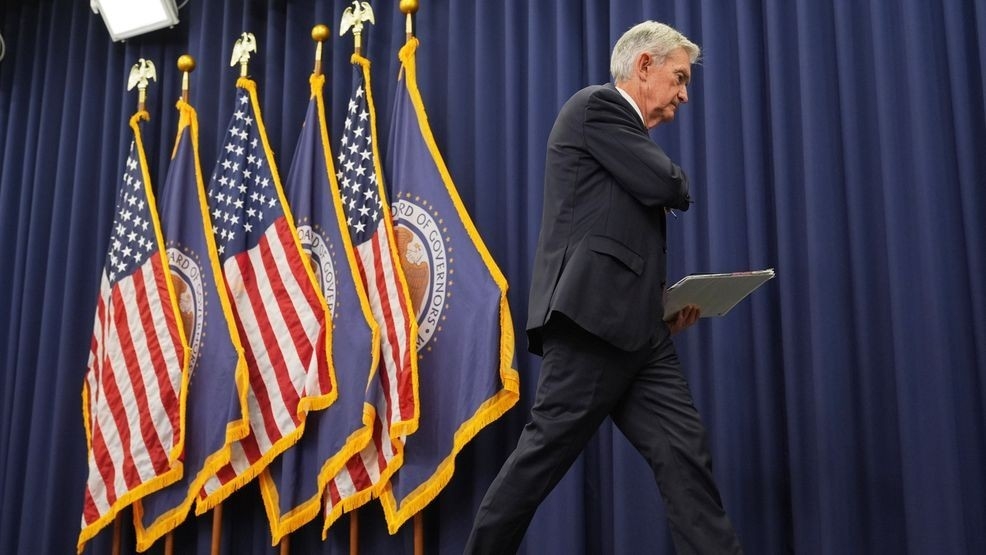Description
WASHINGTON (TNND) — The shutdown stretching into a second week is forcing Wall Street and the Federal Reserve to fly blind to interpret the strength of the economy as releases of closely watched data from the government are on hold.
The shutdown has already delayed the release of the monthly jobs report and could start to impact inflation data and collection of other information providing insights into how the economy is doing. It comes at a challenging time for a Fed that just started a rate-cutting cycle last month over concerns of a cooling labor market, adding even more uncertainty to what was already a difficult environment to make policy decisions in.
With no end to the shutdown in sight with partisan gridlock on Capitol Hill, upcoming data releases on inflation and employment figures are also at risk. Several measures of inflation, consumer spending and other statistics are at risk of being delayed over the next two weeks if the shutdown drags on, compounding the uncertainties facing a data-dependent Fed.
“The government shutdown and data blackout has forced the Fed to navigate in foggy conditions. For the upcoming FOMC, without available hard data from the BLS, the Fed will take a more cautious approach as it relies on alternative third-party data sources,” said Mark Williams, a finance lecturer at Boston University’s Questrom School of Business and former bank examiner at the Fed.
Rather than government data, policymakers have to rely on private-sector measures of the economy, which are not as encompassing. Early returns on private data paint a similar picture of the economy compared to what economists expected from the jobs report, with ADP reporting private payroll employment falling by 32,000 last month. Another measure from Indeed measuring hiring demand based on job postings, found softening hiring trends, which would support the case for another rate cut.
Despite the foggy conditions, Wall Street is still pricing in another quarter-point reduction at the Fed’s meeting later this month. According to the CME FedWatch tool, traders see a nearly 95% chance of a 0.25% cut this month, and favoring another one at the last meeting of 2025 in early December.
The Fed’s September rate cut was driven by concerns about the stumbling labor market and came with signals that two more cuts could be coming as officials kept an eye on how inflation and unemployment develop.
If key pieces of data end up delayed or unavailable, it could force officials to take a more cautious approach to winding down its restrictive rate stance.
“There could be an argument that would create more caution without those numbers and really good credible data, that maybe they'll sit on the sidelines and wait,” Williams said.
The economic picture was already hazy for the central bank and investors as they try to figure out what the effect of President Donald Trump’s sweeping tariffs will have on the economy and consumers. Widely anticipated increases to prices have been slow to materialize and there are questions as to whether they will be long-lasting or a one-time bump.
A chilly job market has also not stopped consumers from continuing to spend money or kept the economy from growing at a healthy clip.
Revisions to second quarter gross domestic product showed the economy grew at a faster rate than initially thought and the Federal Reserve Bank of Atlanta estimates that trend continued in the July to September quarter. But how long consumers will continue to spend amid uncertainties about the labor market and more tariff price passthroughs from businesses coming to fruition remains an open question.
Fed chairman Jerome Powell told reporters after the meeting that the overall economic picture was very unusual, making it harder to predict what will come next. The central bank is also being pulled in opposing directions on its dual mandate of maximum employment and stable prices with stalled hiring and persistent inflation.
“We have a situation where we have two-sided risk, and that means there’s no risk-free path. And so it’s quite a difficult situation for policymakers,” he said. “How do you weight them? How worried are you about one versus the other?”
The unusual dynamic has divided the Fed on how to proceed with moving its benchmark interest rate. Some members are still wary of inflation that has been above the Fed’s 2% target for four consecutive years and are not in a rush to enact further cuts, while others want to be aggressive to keep the job market intact.
"I'm a little wary about front-loading too many rate cuts and just counting on the inflation going away," Chicago Fed president Austan Goolsbee said on CNBC on Friday.
Other Related News
10/06/2025
by Leah KincaidMon October 6th 2025 at 436 PMBibb County Sheriffs Office vehicle WGXA FILE...
10/06/2025
by Leah KincaidMon October 6th 2025 at 418 PMUpdated Mon October 6th 2025 at 421 PMMonroe ...
10/06/2025
EDISTO BEACH SC WCIV A fire burned the beachfront home of South Carolina Circuit Court Ju...
10/06/2025
VALDOSTA Ga WALB - An investigation is underway after a two-year-old was killed in a dog a...
10/06/2025












